

Manufacturer's Specifications:
FM Tuner Section:
Usable Sensitivity: Mono, 9.8 dBf (0.85 µV at 75 ohms).
50-dB Quieting Sensitivity: Mono, 14.7 dBf; stereo, 37.2 dBf.
S/N: Mono, 78 dB; stereo, 75 dB.
Frequency Response: 30 Hz to 15 kHz, +0.5, -1.0 dB.
THD at 50-dB Quieting: 0.3%, mono or stereo.
THD at 65 dBf: 0.15%, mono or stereo.
Intermodulation Distortion: 0.2%, mono or stereo.
Capture Ratio: 1.0 dB.
Adjacent-Channel Selectivity: 14 dB.
Alternate-Channel Selectivity: Greater than 90 dB.
Spurious-Response Rejection: Greater than 96 dB.
Image Rejection: Greater than 90 dB.
AM Suppression: Greater than 70 dB.
Subcarrier Rejection: 90 dB.
Stereo Separation: Greater than 40 dB, from 60 Hz to 10 kHz.
Muting Threshold: 20.8 dBf (3.0 µV at 75 ohms).
Stereo Threshold: 28.7 dBf (7.5 µV at 75 ohms).
Amplifier Section:
Power Output: 80 watts per channel, 20 Hz to 20 kHz, into 8 ohms; 100 watts per channel, 20 Hz to 20 kHz, into 4 ohms.
Rated THD: 0.05%.
Frequency Response: High level, 5 Hz to 100 kHz, +0, -3 dB; MM and MC phono, 20 Hz to 20 kHz, ±0.5 dB.
S/N (A-Weighted): High level, 87 dB; MM phono, 74 dB; MC phono, 72 dB.
Input Sensitivity: High level, 16 mV; MM phono, 0.19 mV; MC phono, 15 µV. Maximum Input Level: High level, 5 V; MM phono, 250 mV; MC phono, 20 mV.
General Specifications
Power Requirements: 115/230 V ac., ± 10%; 50/60 Hz; 56 to 600 watts.
Dimensions: 17 1/8 in. W x 5 1/4 in. H x 13 15/16 in. D (43.5 cm x 13.7 cm x 35.4 cm).
Weight: 26.4 lbs. (12 kg).
Price: $1,995, with remote control.
Company Address: 122 Dupont St., Plainview, N.Y. 11803, USA.
Tandberg receivers have always been noted for their high performance and their excellent construction and industrial design. I can remember owning a Tandberg open-reel stereo tape recorder long before stereo became popular. I also have a fond recollection of a visit to Tandberg's factory in Oslo, Norway, where I had the honor of meeting Mr. Tandberg, the founder of the company, just 10 days before his untimely death. For reasons too complex to get into here, after Tandberg's death the company's fortunes began to decline although the engineering level remained high. Following a succession of management changes in the U.S. subsidiary, Tandberg of America, distribution of the company's products in this country has been recently taken over by Ortofon. I am happy to report that the Tandberg approach to receiver design has not been abandoned. This powerful Model 3080A is very much in the tradition of the Tandberg products that have been admired for many years all over the world.
Tandberg has chosen to omit an AM section in this receiver, concentrating instead on good FM performance and on an amplifier section which has power ratings high enough for the wide dynamic range of today's digital program sources. Up to 16 FM station frequencies can be memorized by the 3080A's frequency-synthesized tuning system.
Manual tuning is possible, of course, as is automatic search, during which the tuner seeks the next usable signal up or down the FM band.
One of my pet peeves concerning tuner design has been eliminated in the tuner section of this receiver. I always object to having the mute on/off function tied to the mono/ stereo selection. I feel that if I want to listen to a weak stereo signal-no matter how noisy it may be--I should be able to do so. Tandberg engineers must have agreed, for they provided separate mono/stereo and mute switches on this receiver. Another fine feature is the ability to listen to one program source while recording another.
The power amp section, like some of Tandberg's most recent integrated and separate power amp designs, employs no overall negative feedback, yet manages to obtain a distortion rating that is well below audibility up to and beyond rated output levels.
This is the first Tandberg receiver I have ever tested that comes packed with a multipurpose remote control. This master remote, the RC 3000, is designed to operate many different units in the Tandberg 3000 series. Just about every front-panel control function you'd normally adjust during operation can be accessed from the remote. In addition, the remote can be used to access presets by number, so you don't have to scan through the preset numbers using the up and down buttons on the front panel itself. One little trick regarding the remote control stumped me until I read the owner's manual carefully. The remote's volume-control button worked immediately, but when I tried to operate other pushbuttons-for tuning or tone control adjustment, for example-it was as if the remote or the receiver's sensor had dozed off. The reason: Since the remote operates many Tandberg components, it's necessary to press the button labeled "Receiver" before functions other than volume control will operate. What's that they say about reading the owner's manual when all else fails?
Control Layout
A tiny pushbutton at the lower left of the front panel turns on the receiver. To the right are a headphone jack, "A" and "B" speaker selector buttons, and rotary controls for bass, treble, and balance. A row of larger pushbuttons, just above and across the middle of the panel, includes three buttons associated with storing and recalling station presets and "Record" and "Program" buttons for choosing the program source to be recorded and the source you want to hear (both cycle through the sources in sequence--you don't select a source directly). There are also a tone-control "Defeat" button, a mono/stereo button, a separate mute button, up and down search buttons used in FM tuning, and an "Auto/Man" button that selects the desired tuning mode.
When FM muting has bean selected, or when automatic search tuning is called for, LEDs above those buttons will illuminate.
Along :he top of the front panel are a small window that displays preset information, two rows of LEDs that indicate which program source is being recorded and which is being listened to, and a larger display window that shows selected FM frequency, reception of a stereo signal, signal strength, and center-of-channel tuning. Tuning can be done in increments of 100 kHz. The master volume control is at the extreme right of the front panel.
The receiver's rear panel is equipped with a 75-ohm antenna connector, for which a suitable male plug is provided, as is a matching transformer for 300-ohm antennas.
Separate pairs of input jacks are provided for MM and MC phono cartridges, as is a grounding terminal. Six additional pairs of jacks handle "Tape 1" and "Tape 2" play and record, AUX, and CD inputs. The "Tape 2" input and output jacks are suitable for, and are additionally labeled for, DAT or for audio signals from and to video recorders. Barrier strip speaker terminals at the right of the rear panel accommodate two sets of stereo speakers.
Tuner Measurements
When the receiver is first turned on, a protection circuit causes a delay of approximately 12 sec, allowing the "Zero Feedback" stages to stabilize before any sound is heard.
Initially, the receiver functions are set up as follows: The FM section is tuned to the last station you listened to; the letter "F" shows in the small window at the left of the panel; tone controls are defeated, with an LED above the tone-defeat button indicating that fact, and the receiver is in the manual search tuning mode.
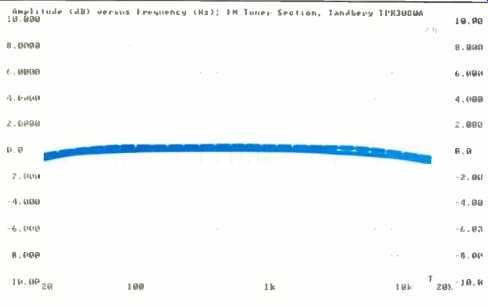
Fig. 1--Frequency response, FM tuner section. Note vertical scale of 2 dB/div.
Right channel (dashed) curve has been displaced for clarity.
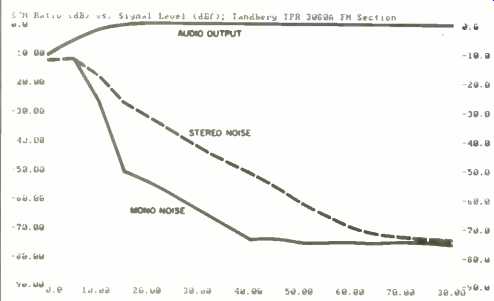
Fig. 2--Mono and stereo quieting characteristics.
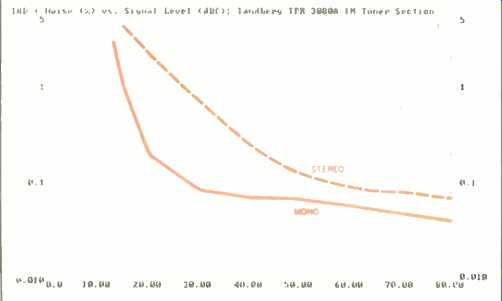
Fig. 3--THD + N vs. signal strength for a 1-kHz modulating signal.
I checked the performance of the FM tuner section first.
Frequency response is shown in Fig.1 for both channels.
(The right-channel curve has been deliberately displaced above 0 dB for the sake of clarity, since response in both channels was identical.) Response at 15 kHz was down only -0.8 dB, while at 20 Hz it was off by -0.4 dB. Figure 2 shows the quieting characteristics of the tuner as a function of incoming signal strength. The uppermost curve is the audio output under conditions of 100% modulation at 1 kHz.
The bottom curve represents the residual noise with modulation turned off, while the dashed curve depicts residual noise in stereo. In mono, 50-dB quieting was attained with input signals of only 14.5 dBf, while in stereo mode, 38 dBf of signal was required to achieve the same level of quieting.
S/N ratios at 65 dBf of input signal fell a bit short of the figures claimed by Tandberg. I measured 75 dB for mono and just short of 72 dB for stereo signals.
Figure 3 shows how THD + N decreases with increasing signal strength. From these curves, I am able to determine usable sensitivity. Mono usable sensitivity (the point at which THD + N equals 3%) measured 13 dBf. Stereo usable sensitivity measured 17 dBf. At strong signal levels, mono THD + N decreased to between 0.04% and 0.06%, while stereo THD + N measured between 0.07% and 0.09%. The modulating signal used to plot these curves was 1 kHz at 100% modulation.
To determine THD + N figures at other modulating frequencies, I set the signal level at a constant 65 cBf and plotted THD + N versus frequency (Fig. 4). You may notice a discrepancy between the 1-kHz readings in this figure and the readings in Fig. 3, all of which were made at 1 kHz. The THD + N was lower this time, owing in part to further warmup of the receiver and to more careful tuning for minimum distortion before the test began. Now, THD + N in mono at 1 kHz was 0.037%, while in stereo, it measured 0.059%. At 100 Hz and 6 kHz, mono THD measured 0.035% and 0.09%, respectively; in stereo, at those same frequencies, THD + N was 0.056% and 0.081%.
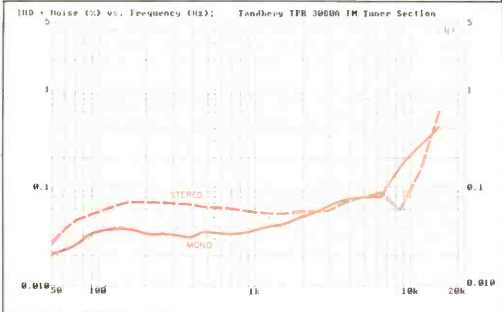
Fig. 4--THD + N vs. frequency for 65-dBf signal input.
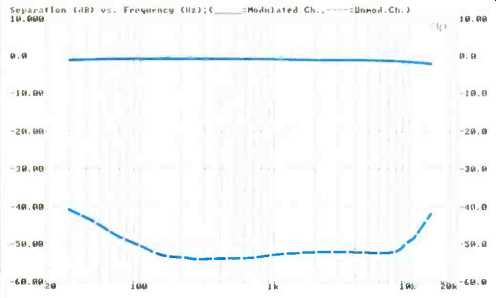
Fig. 5--Frequency response and stereo separation. Note change of vertical
scale from Fig. 1.
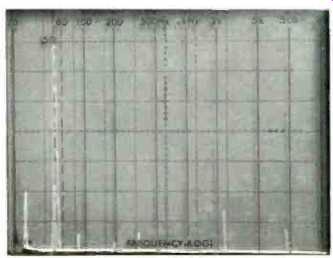
Fig. 6--Separation and crosstalk components for a 5-kHz modulating signal.
Figure 5 shows stereo frequency response (solid curve) and channel separation (dashed curve). Separation at 1 kHz measured very high-more than 52 dB. At 100 Hz and 10 kHz, the other two test frequencies measured according to the IHF/IEEE Standard, separation was about 50 dB in both cases. All of these results are outstanding for any stereo FM tuner, let alone a tuner section in an all-in-one receiver. In Fig. 6, I used my spectrum analyzer, sweeping linearly from 0 Hz to 50 kHz, to determine separation and crosstalk for a 5-kHz signal modulating one channel only.
The tall spike represents the desired output from the modulated channel, while the shorter spike contained within it, representing the 5-kHz output from the unmodulated channel, shows a separation of around 47 dB. (Each vertical division in the display represents 10 dB of amplitude difference.) Shorter spikes to the right, observed at the output of the unmodulated channel, represent minute amounts of harmonic distortion, the 19-kHz pilot signal (down about 62 dB relative to full modulation), and sideband components on either side of the suppressed 38-kHz subcarrier.
Additional measurements made for the FM tuner section pretty well confirmed Tandberg's other published specifications. Alternate-channel selectivity measured 93 dB. Capture ratio measured 1.1 dB. Image and spurious-response rejection were both in excess of 100 dB. AM suppression measured 68 dB. Muting threshold was between 20 and 23 dBf, or close enough to the 20.8 dBf claimed.
Amplifier Measurements
The power amp section of the Tandberg 3080A easily delivered its rated output of 80 watts per channel, with both channels driven simultaneously. What's more, using 6-ohm loads, there was virtually no difference in harmonic distortion readings at any audio frequency; THD remained at just about 0.08% (Fig. 7). The same flat response occurred when I measured THD + N versus frequency for 115 watts into a 4-ohm load; distortion here remained at about the 0.06% level. Note that this power level is 15 watts above the maker's rating.
Figure 8 shows how THD + N varied with increasing output levels for frequencies of 20 Hz, 1 kHz, and 20 kHz.
With 8-ohm loads, THD + N at the rated output of 80 watts per channel measured 0.016% at 1 kHz and 20 Hz, and about 0.04% at 20 kHz. With 4-ohm loads, THD + N for the rated output of 100 watts per channel measured 0.0165% at 1 kHz, 0.02% at 20 Hz, and 0.029% at 20 kHz.
Figures 9 and 10 show two types of IM distortion. For SMPTE-IM distortion, plotted against power output in Fig. 9, I measured 0.073% at rated output into 8 ohms, and 0.076% at rated output into 4 ohms. CCIF-IM, or twin-tone, distortion was plotted against power output in Fig. 10. With 8--ohm loads, CCIF IM measured 0.011% at rated output, while for 4-ohm loads, CCIF IM was 0.0098% at rated output.
Dynamic headroom of the amplifier was 1.6 dB. The greatest damping factor I was able to read was limited by the very small, but still significant, resistance of the 12 gauge connecting cable between the speaker terminals of the receiver and the input terminals of my Audio Precision test instrument. Nevertheless, I did manage to read a clamping factor of 500, referred to 8 ohms, at the prescribed test frequency of 50 Hz.
Sensitivity measured 0.6 mV for the MM phono inputs and 24 µV for the MC inputs, as against 0.19 mV and 15 µV claimed by Tandberg. I suspect that Tandberg may rot be quoting sensitivity using the same standard reference levels that I do. The output level that I use for determining input sensitivity of any amplifier input is 1 watt. I measured an input sensitivity of 13 mV for 1 watt output at the high-level inputs, which is close enough to the specified 16 mV. Phono overload was on the low side, measuring only 70 mV for the MM inputs, as against 250 mV claimed, and 6 mV for the MC inputs, as against 20 mV claimed by Tandberg. I normally expect a product of this overall quality to be able to handle at least 100 mV via the MM inputs and at least 10 mV via the MC phono inputs.
The A-weighted S/N ratio for the high-level inputs measured 82.1 dB for the left channel and 81.4 dB for the right, referred to 1 watt output with an input of 0.5 V. While these results fall short of the 87 dB claimed by Tandberg, they are nevertheless more than acceptably high. The S/N figures for the phono section were somewhat more disappointing. For the MM phono inputs, S/N measured only 70.7 dB for the left channel and 70 dB for the right. These results are referred to 1 watt output, with 0.5 mV applied to the inputs. As for the MC inputs, using a 500-uV input signal and again adjusting the output to produce 1 watt into 8-ohm loads, S/N measured 71.6 dB for the left channel and 71.5 dB for the right.
These MC results are very close to those claimed by Tandberg, but what surprises me is that the S/N ratio for MM phono not only falls far short of claimed performance but is actually poorer than that measured for the MC phono inputs.
If you plan to use a turntable, I would suggest that you equip it with a moving-coil cartridge rather than with a moving magnet type, if only because of the better signal-to-noise ratio you will obtain.
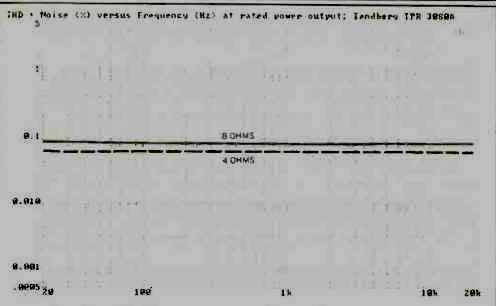
Fig. 7--Amp THD + N vs. frequency; 8-ohm performance (solid curve) measured
at full rated output of 80 watts per channel; 4-ohm performance (dashed curve)
measured at 115 watts, 15 watts above rated output.
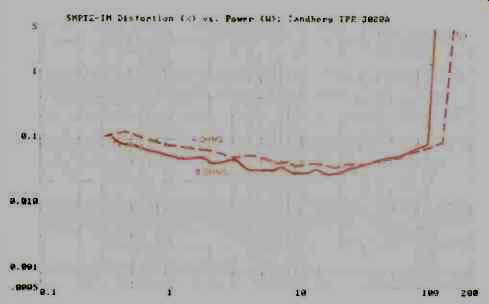
Fig. 8--THD + N vs. power output per channel into 8- and 4-ohm loads, for
20 kHz, 1 kHz, and 20 Hz (top to bottom for each load). The 8-ohm curves
for 20 Hz and 1 kHz are nearly identical.
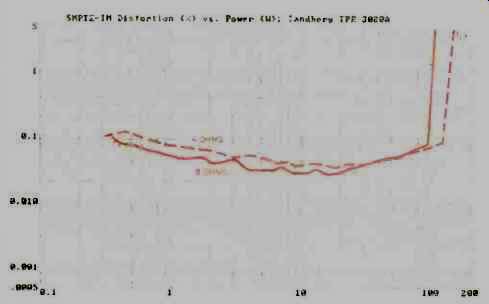
Fig. 9--SMPTE-IM distortion vs. power output for 8and 4-ohm loads.
Figure 11 shows the maximum boost and cut range for the bass and treble tone controls of this receiver. The frequency sweep was deliberately extended beyond the audible range, to 10 Hz and 100 kHz, to see if maximum boosts resulted in a continuous rise of output at subsonic and ultrasonic frequencies. Happily, they did not. Note the peak bass boost at around 35 Hz and the downward slope of the curve below that frequency. At the treble end of the spectrum, maximum boost is observed at around 40 kHz, after which the curve also takes a downward trend. If the design had not been executed this way, using extreme boost settings of the tone controls might result in inordinately high levels of rumble when playing phonograph records and in injury to tweeter elements.
Figure 12 shows how accurate the RIAA equalization was in my sample. The curve represents deviation from perfect RIAA equalization. Maximum deviation was only +0 35 dB at 20 Hz and around +0.2 dB at 6 kHz. At most other frequencies, RIAA accuracy was far better.
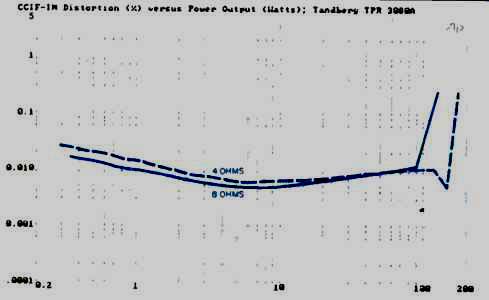
Fig. 10--CCIF-IM (twin tone) distortion vs. power output for 8- and 4-ohm
loads.
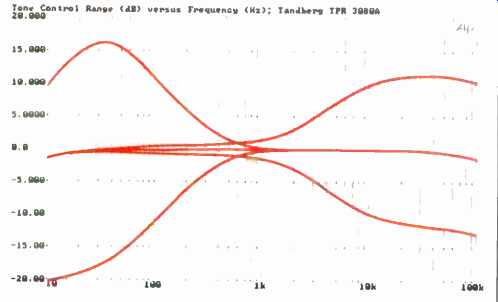
Fig. 11--Bass and treble tone-control range.
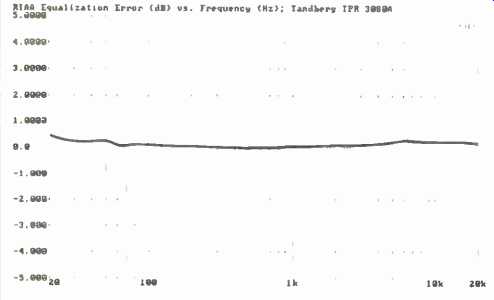
Fig. 12--Deviation from RIAA equalization.
Use and Listening Tests
As I mentioned earlier, the flexibility of being able to select one program source for recording and another for listening is a welcome feature. Setting the presets was easy enough, though it's a bit of a nuisance having to "step through" all preset numbers to get to, say, preset 16unless you use the supplied wireless remote. Of course, you can always place your favorite stations into lower numbered presets, if you wish. The "Center" tune light illuminated when I was very close to the minimum distortion point for a given FM signal, but I would have liked a somewhat more definitive signal-strength indicator instead of the single LED that glows dimly for weak stations and brightly for stronger ones. Muting threshold was set just where 4 like it, but stereo threshold was set a bit too low, in my opinion. There's no point in allowing the stereo decoder to take over at signal levels below 20 or 30 dBf; stereo reception is simply too noisy at such low levels. Of course, if this bothers you (as it did me), you have the option of pressing the mono button to get rid of the background noise.
Aside from logging around 48 usable FM signals with my outdoor antenna connected to the receiver-and some 38 using an amplified indoor antenna made by Terk Technologies (reviewed in February 1989)--much of my listening was done using Compact Disc source material. I listened to both pop and classical discs, including three new Telarc releases. One of these, Empire Brass (CD-80159), features that brass ensemble in selections from Leonard Bernstein's West Side Story as well as selections from George Gershwin's Porgy & Bess. I find that listening to brass instruments playing in a small group reveals the more subtle forms of IM distortion that often are produced by some amplifiers. I detected no such distortion components while auditioning this Tandberg receiver. For a fuller orchestral work, I chose another Telarc release, in which the featured selection was Dvorák's Symphony No. 7 in D Minor, with André Previn conducting the Los Angeles Philharmonic (CD-80173). Orchestral balance seemed just right, with instrument placement rock-steady. Finally, for a more contemporary sound, I listened to selections from another Telarc disc, Naturally (CD-83301), featuring Mel Lewis and the Jazz Orchestra performing Thad Jones' jazz compositions and arrangements. My conclusion: The Tandberg 3080A handles just about any type of musical material with no trace of audible distortion and with excellent tonal balance and phase accuracy. For the audio enthusiast seeking an all-in-one receiver which performs as well as many separates--and better than some--Tandberg still remains, as they like to say, a superb "European alternative."
-Leonard Feldman
(Adapted from: Audio magazine, July 1989)
Also see:
Tandberg Model TR-2075 Stereo AM/FM Receiver (Mar. 1976)
Tandberg Compact Disc Player (Nov. 1987)
Tandberg TCA 3018A Preamp and TPA 3026A Amp (Apr. 1987)
Tandberg 3008A Preamp and 3009A Amp (Jan. 1986)
= = = =